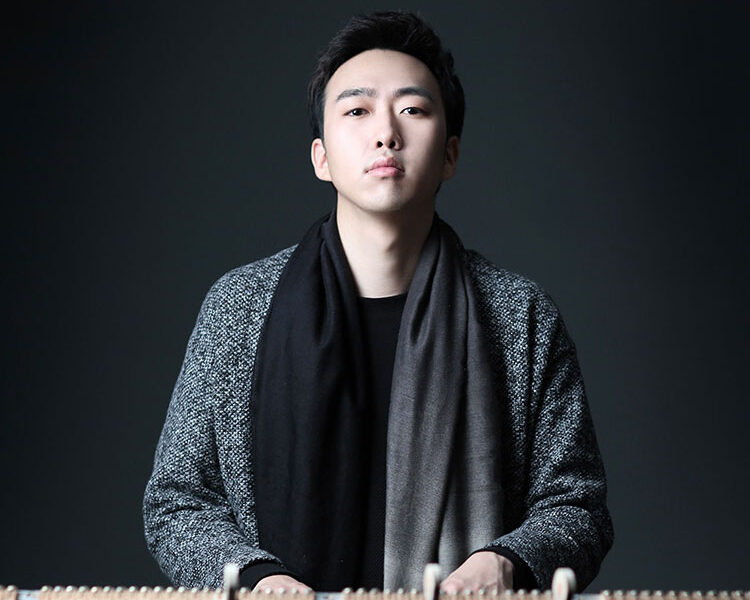Jiwon Han—Début:Recording in Review
Jiwon Han, piano
Chopin–Ballade No. 4 in F Minor, op. 52
Chopin–Barcarolle in F-sharp Major, op. 60
Liszt–Sonata in B minor, S. 178
Stravinsky–Three Movements from Petrushka
Isang Yun–Five Pieces for Piano (1958)
Recorded at Yagi Studio, Seoul, Korea, 2014
Fortified with two performance degrees and an artist diploma from South Korea, a second artist diploma from Cincinnati, two doctorates in piano from Michigan State University, and an admirable list of prizes, recordings, and jobs as conductor, educator, and collaborative artist, Jiwon Han should have little need to prove his status as an expert in the field. Judging from his album “Jiwon Han—Début,” recorded nine years ago at the age of twenty-seven, we can already hear Mr. Han’s formative tastes spanning the range of pianistic warhorses, pieces which define the real article and demand the utmost of a performer. These audio files present the young, pre-Doctor Han as a probing yet conservative virtuoso steering all ears toward an eminent future.
The chronological arrangement of the YouTube playlist, Jiwon Han—Début , begins in 1842 with rather late Chopin, although one could only imagine the effect of Mr. Han’s incisive fingers on a Baroque or Classic masterwork (perhaps something to anticipate in another release). Meticulous to a fault in the preparation of every musical detail, he squeezes the last drop of tone from each voice in Chopin’s multi-layered counterpoint and leaves no note to speculation. The poetic genesis of the Fourth Ballade is nascent and the woven, operatic gondola songs of the Barcarolle, among Chopin’s last and most reflective experiments in sound, are given highly burnished treatment marked by discipline and unflinching concentration. To be sure, audio engineering and the YouTube format place us in a digital environment quite different from that of a concert hall—which would not jostle our meditations with jingles and blaring ads—but the “acoustic” is somewhat distant, treble-centric, and wet, even when Mr. Han seems to be pouring both hands into a chordal tirade. Liszt’s symphonic and tumultuous B minor Sonata unfolds acrobatically yet earnestly, pacing out the glorious arrivals of second themes and fugal upheavals with an almost micro-managed conductor’s sense of time. We marvel at Mr. Han’s power and facility while we search for a trace of the Hungarian rhapsodist who would transmute absolute structure and tonality within several years of the Sonata’s publication in 1854. Perhaps owing to the limitation of computer speakers and the sprinkling of commercial breaks between sections of this one-movement traversal of the human spirit, Mr. Han’s assiduous interpretation leaves us longing to hear him live, in a setting in which we might actually hold our breath.
Igor Stravinsky’s Petrushka becomes an instant magnet for Jiwon Han, who recorded the three excerpts at nearly the same age as the composer of the original ballet (Stravinsky was twenty-eight in 1910 when he realized his orchestral vision of a magician instilling human energy and emotion into puppets). Indeed, the piano suddenly leaps into the room as Mr. Han conjures a model soundscape of electric octaves, staccatissimo accents, and carnival folk themes. His superb rhythmic articulation and dry ostinato, so well matched to the exacting style of the regimented Russian, could be lifted into a freshly choreographed performance if Vaslav Nijinsky’s mocking reincarnation were to reappear onscreen, as Petrushka’s ghost hovered over the stage at the end of the Shrovetide Fair scene in the ballet. A pianist, however, as the sole element absent a full tableau, must be set designer, theatrical costumer, director, and choreographer, and in this regard, we hear Mr. Han’s neoclassic character primed to discover more Slavic savagery and sheer zaniness in his brilliant playing.
In a surprising detour from the showy persona exemplified by the rest of his program, Mr. Han ends on an unsettled note, with the expressionist Korean-German Isang Yun’s Five Pieces for Piano, or Fünf Stücke für Klavier. These comprise the earliest work of a Korean-born composer who studied in Japan, Paris, and Berlin and befriended Cage, Boulez, and Stockhausen in his quest for the unification of Eastern and Western styles. In 1958, before his political imprisonment and voiced strivings for the reconciliation of North and South Korea, Isang Yun was influenced by a mix of twelve-tone serialism, Taoist naturalism, Buddhist chants, and Korean instrumental timbres. It is to his credit that Mr. Han champions such mathematically constructed and intricate music. The five pieces evoke strains of Schoenberg’s Suite for Piano, op. 25 and Messiaen’s Catalogue d’Oiseaux, with new ideas: extreme curves of high and low register, colorful grace notes, imitations of vibrato, glissando, and pizzicato techniques, and fortississimo or pianississimo fermatas as isolated sounds trailing off into silence. Mr. Han portrays the contrasts effectively and freely. There may be an even higher level of control indicated by the composer’s careful progression of rhythmic values (triplets, quintuplets, septuplets) that could warrant a sense of restraint in the performer’s instinctively Romantic rubato, but the result is dramatic and alluring.

